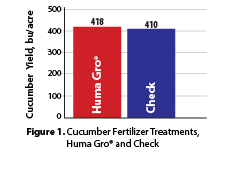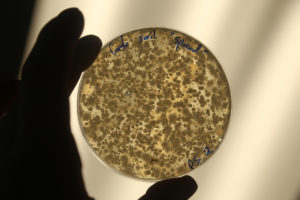Objective
Over the years, some weeds have developed resistance to common herbicides such as glyphosate. To overcome this hurdle, growers may bump up the rates or add other herbicides or products with different mechanisms/modes of action into the tank mix. Such approaches have had mixed results over the long run and have increased the cost of weed control.
In this study, Huma Gro® X-Tend® was added to a glyphosate product to test the potential for improving the herbicidal efficacy of the product in a cost-effective way. [Read more…]

 For centuries, humic acids (HA) were thought to be composed of much larger molecules than those found in fulvic acids (FA). However, the application of
For centuries, humic acids (HA) were thought to be composed of much larger molecules than those found in fulvic acids (FA). However, the application of 
 An article by Heather Jennings, PE, Director of Probiotic Solutions®, has been published in Tri-State Seminars Magazine, the proceedings of the 36th Annual Tri-State Seminar held August 9–12, 2021, in Las Vegas, Nev. Ms. Jennings was a featured presenter at the seminar, which provides training and certification classes to educate water professionals from Arizona, California, and Nevada.
An article by Heather Jennings, PE, Director of Probiotic Solutions®, has been published in Tri-State Seminars Magazine, the proceedings of the 36th Annual Tri-State Seminar held August 9–12, 2021, in Las Vegas, Nev. Ms. Jennings was a featured presenter at the seminar, which provides training and certification classes to educate water professionals from Arizona, California, and Nevada.
 Most of the work on agricultural applications of humic substances (HS) has focused on their biostimulant effects on plants. Far less work has been conducted on the effects of HS on soil microbial populations. It’s not surprising to learn, from the few studies that have been published, that HS also stimulate the growth of soil bacteria, even the bacteria that inhabit earthworm digestive tracts. One of the most important discoveries is that many species of soil bacteria are able to grow on humic acid (HA) as their sole carbon source (
Most of the work on agricultural applications of humic substances (HS) has focused on their biostimulant effects on plants. Far less work has been conducted on the effects of HS on soil microbial populations. It’s not surprising to learn, from the few studies that have been published, that HS also stimulate the growth of soil bacteria, even the bacteria that inhabit earthworm digestive tracts. One of the most important discoveries is that many species of soil bacteria are able to grow on humic acid (HA) as their sole carbon source (